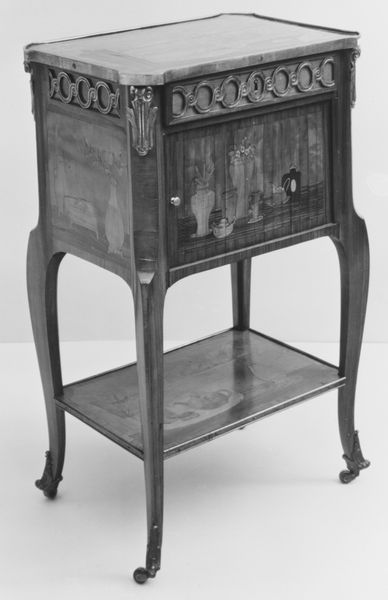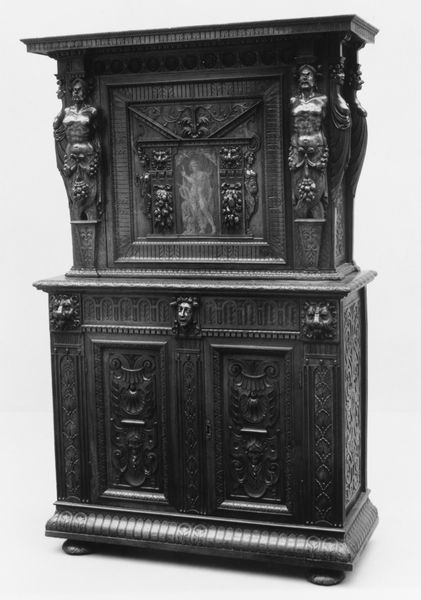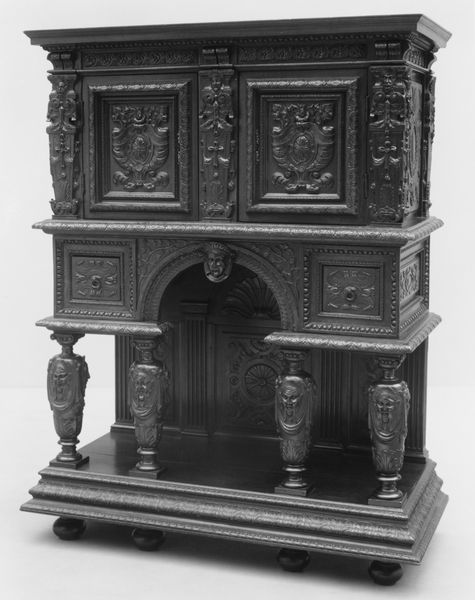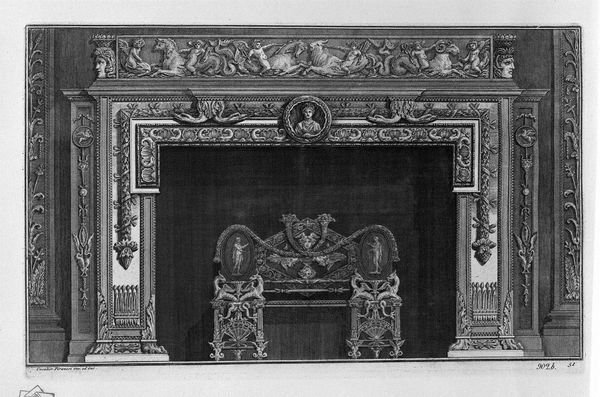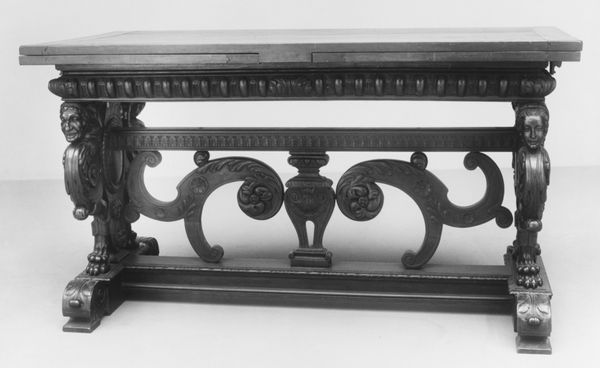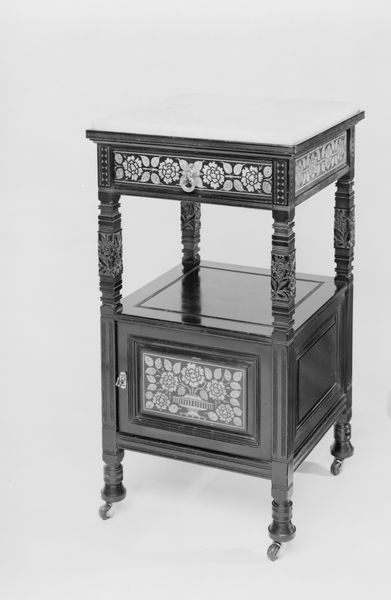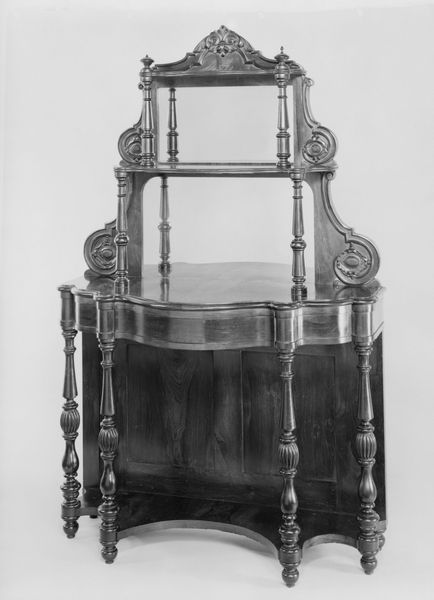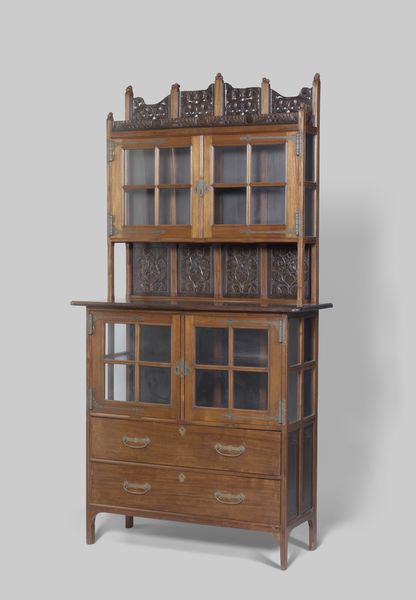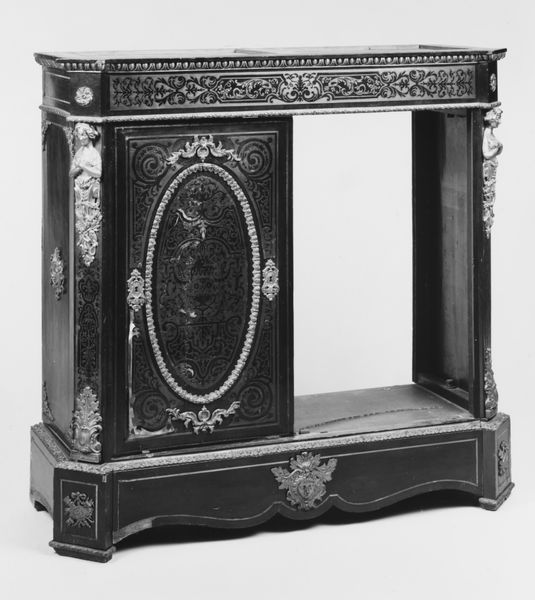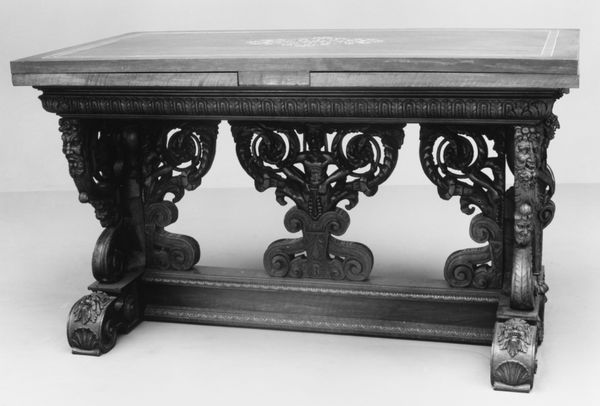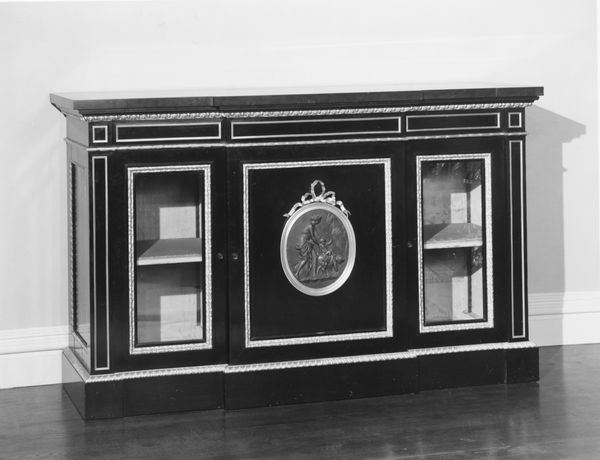
mixed-media, carving, wood, architecture
#
mixed-media
#
carving
#
arts-&-crafts-movement
#
sculpture
#
historic architecture
#
form
#
traditional architecture
#
united-states
#
wood
#
decorative-art
#
architecture
Dimensions: 82 3/4 x 61 x 18 1/2 in. (210.2 x 154.9 x 47 cm)
Copyright: Public Domain
Curator: Let's discuss this fascinating "Cabinet" created by Charles Tisch between 1881 and 1884, now residing at the Metropolitan Museum of Art. It is crafted using a mixed-media approach incorporating carving and wood, a beautiful example of the Arts and Crafts movement. Editor: Immediately, I notice how the cabinet speaks of aspiration, its layered tiers rising up, promising function while hinting at status. The ornate detail makes me think about class and labor. What was the role of functional art during that period, and how was it perceived by various socioeconomic classes? Curator: During the Arts and Crafts movement, such pieces became statements against industrialization, reaffirming the value of the handmade. For the burgeoning middle class, these furnishings offered accessible forms of high art within their homes, reflecting a sense of cultivated taste. Editor: This resonates when viewing the stylized natural forms and the intricate patterns; it feels inherently gendered. It brings up questions about the social expectations of the time around domesticity and art’s role within that space. Curator: Precisely. Pieces like this also challenge the rigid hierarchies often established by academic artistic traditions. They blur lines, making craftsmanship a vital part of the artistic discourse. It becomes accessible, resisting the elitism sometimes linked to art institutions. Editor: The very presence of this "Cabinet" in the Metropolitan Museum of Art makes it worthy of consideration; it reflects changing attitudes. As institutions reassess canons, what does that signal regarding whose narratives gain visibility, and why? Curator: The museum’s display reflects the changing discourse, indicating a recognition of objects beyond painting and sculpture as valid forms of art expression. Recognizing its decorative purpose makes room to acknowledge a much wider range of human experience. Editor: So true; looking at the geometric forms within the wood carving itself makes me appreciate the convergence between form and function while allowing a glimpse into societal values of late 19th-century America. Curator: It's enriching how this mixed-media piece becomes a historical and cultural marker—beyond mere decorative arts. Editor: Definitely—it asks profound questions about class, gender, labor, and art’s function.
Comments
No comments
Be the first to comment and join the conversation on the ultimate creative platform.
